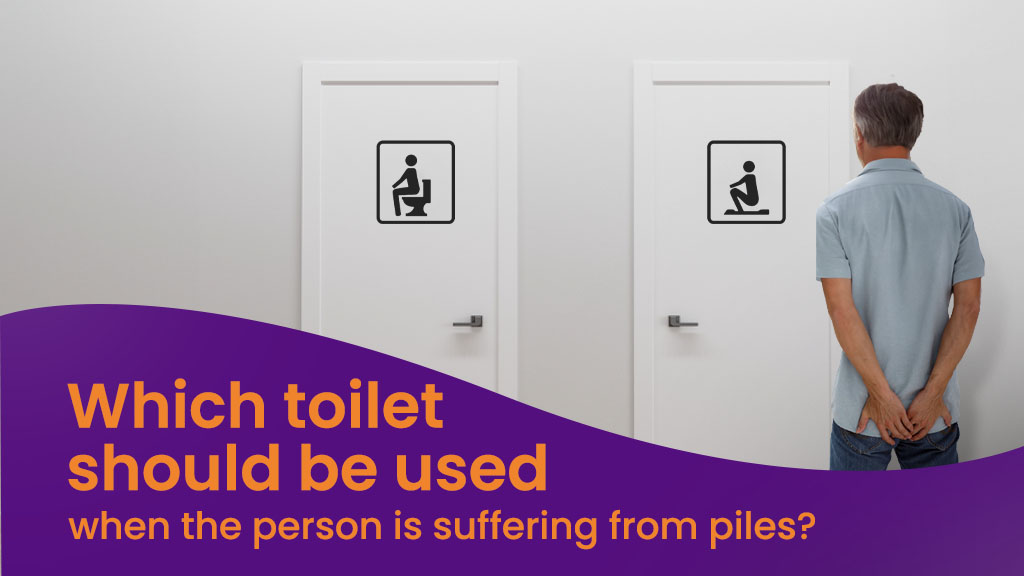
Which toilet position should be used when the person is suffering from piles?
Medically reviewed by
Dr. Shuddhatam Jain
Haemorrhoids, commonly known as piles, can be a distressing and painful condition affecting many individuals in India. These swollen veins in the anal region can cause itching, pain, and occasional bleeding. One factor that can significantly impact the discomfort experienced is the sitting position during bowel movements. In this blog, we will explore the best toilet position for individuals suffering from piles and discuss other ways to ease haemorrhoid pain.
Understanding Haemorrhoids and their Causes
Haemorrhoids are clusters of swollen veins located just below the mucous membranes lining the lowest part of the rectum and anus. Normally, they are internal and go unnoticed. However, when these veins become swollen and distended, they can protrude from the anus, leading to pain and discomfort.
Several factors contribute to the development of haemorrhoids, including sustained abdominal pressure due to pregnancy, constipation, or a sedentary lifestyle. Dietary habits, such as a lack of fibre and spicy foods, can also increase the risk of haemorrhoids. People across various demographic backgrounds may experience piles, and it is not exclusive to a particular race or socioeconomic class.
The Best Toilet Position for Haemorrhoid Relief
Interestingly, the toilet position plays a crucial role in reducing discomfort during bowel movements for individuals with haemorrhoids. Research has shown that the ideal position is squatting, where the knees are raised and legs are slightly apart, creating a V-shape from the bowel to the knees.
Squatting relaxes the puborectalis muscle, creating a straight line to the exit, which lessens stress and pressure on the anal region. This position also facilitates complete emptying of the bowel, reducing the risk of straining. Several portable footstools are available on the market to help individuals achieve the squatting position while using the toilet.
On the other hand,sitting on a toilet seat can be detrimental as it twists the gut, making it difficult to complete a bowel movement quickly and smoothly. To improve sitting posture on the toilet, some people use doughnut-shaped cushions or place towel rolls or foam wedges under their upper thighs or buttocks to elevate and avoid direct contact with the seat.
Avoiding Aggravating Positions
To prevent further aggravation of haemorrhoids, certain sitting positions and habits should be avoided:
- Avoid sitting unnecessarily on the toilet for extended periods, as it can increase pressure on the blood vessels in the anal region.
- Refrain from using rubber ring cushions, as they can obstruct blood flow and worsen the swelling and pain.
- Straining during bowel movements, lifting heavy objects, and engaging in anal intercourse should be avoided, as they can strain the affected area and hinder proper blood flow.
Conclusion
While haemorrhoids can be uncomfortable and painful, they are generally treatable at home. Adopting a high-fibre diet, maintaining an active lifestyle, and using the correct toilet position can significantly reduce discomfort and the risk of recurrence.If home remedies do not provide relief within a week, it is advisable to seek medical attention. Remember, finding the best toilet position during bowel movements can make a substantial difference in managing haemorrhoid pain effectively.